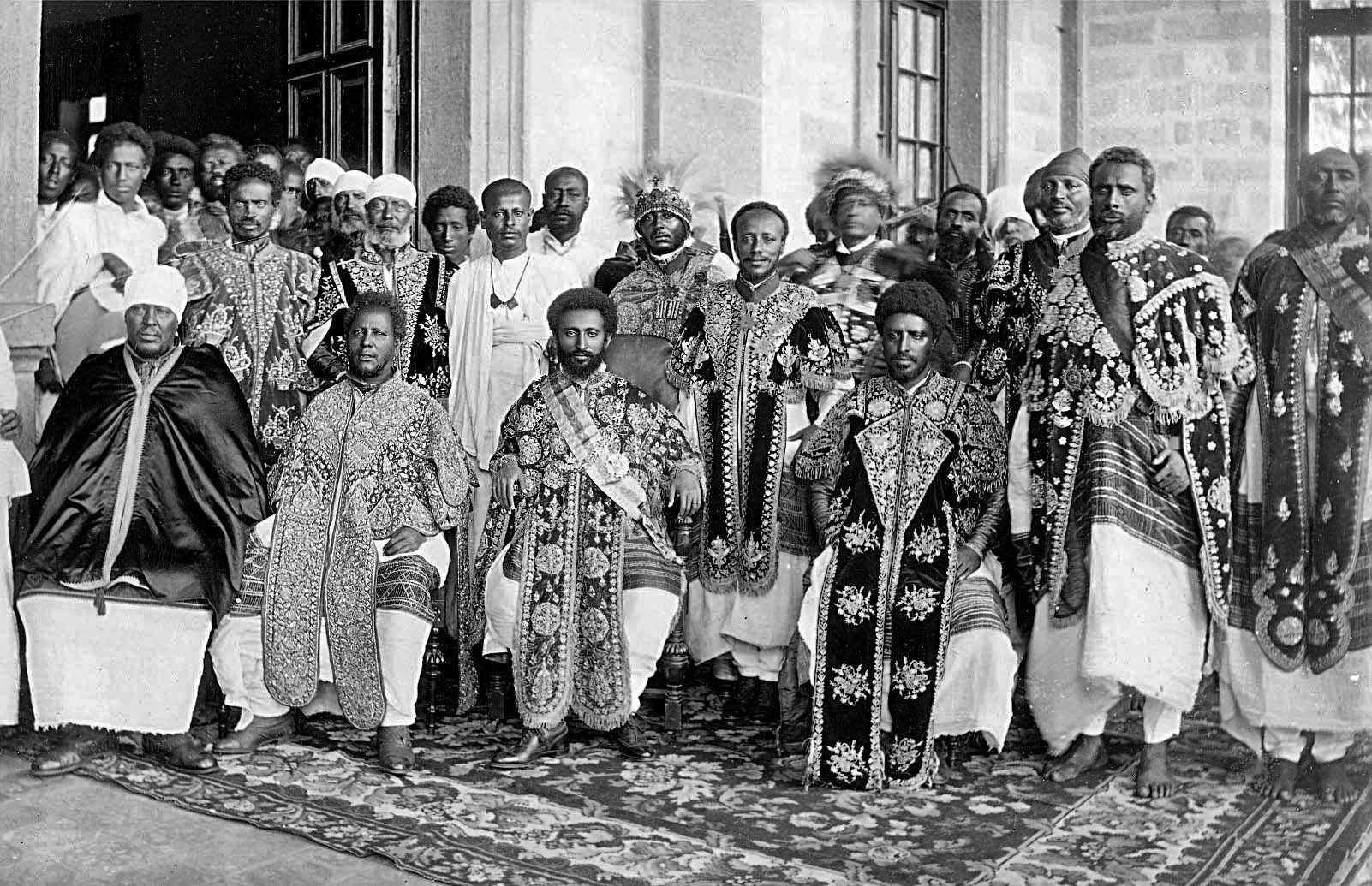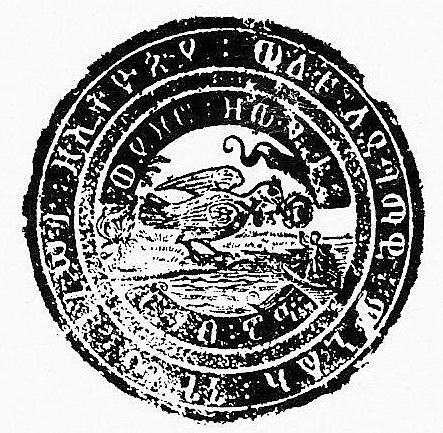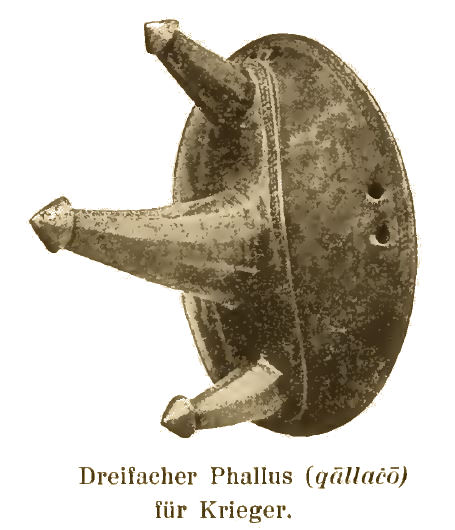|
Menelik II Of Ethiopia
Menelik II ( ; horse name Aba Dagnew (Amharic: አባ ዳኘው ''abba daññäw''); 17 August 1844 – 12 December 1913), baptised as Sahle Maryam (ሣህለ ማርያም ''sahlä maryam'') was king of Shewa from 1866 to 1889 and Emperor of Ethiopia from 1889 to his death in 1913. At the height of his internal power and external prestige, the process of territorial expansion and creation of the modern empire-state was largely completed by 1898.Zewde, Bahru. A history of Ethiopia: 1855–1991. 2nd ed. Eastern African studies. 2001 The Ethiopian Empire was transformed under Menelik: the major signposts of modernisation were put in place, with the assistance of key ministerial advisors. Externally, Menelik led Ethiopian troops against Italian invaders in the First Italo-Ethiopian War; following a decisive victory at the Battle of Adwa, recognition of Ethiopia's independence by external powers was expressed in terms of diplomatic representation at his court and delineation of ... [...More Info...] [...Related Items...] OR: [Wikipedia] [Google] [Baidu] |
Ethiopian Aristocratic And Court Titles
Until the end of the Ethiopian Empire, Ethiopian monarchy in 1974, there were two categories of nobility in Ethiopia and Eritrea. The Mesafint ( , modern transcription , singular መስፍን , modern , "prince"), the hereditary royal nobility, formed the upper echelon of the ruling class. The Mekwanint ( , modern , singular መኰንን , modern or , "officer") were the appointed nobles, often of humble birth, who formed the bulk of the aristocracy. Until the 20th century, the most powerful people at court were generally members of the ''Mekwanint'' appointed by the monarch, while regionally, the ''Mesafint'' enjoyed greater influence and power. Emperor Haile Selassie greatly curtailed the power of the ''Mesafint'' to the benefit of the ''Mekwanint'', who by then were essentially coterminous with the Ethiopian government. The ''Mekwanint'' were officials who had been granted specific offices in the Abyssinian government or court. Higher ranks from the title of ''Ras'' descendi ... [...More Info...] [...Related Items...] OR: [Wikipedia] [Google] [Baidu] |
Menelik II Seal
Menelek or Menelik may refer to: *Menelik I, first Emperor of Ethiopia *Menelik II (1844–1913), Emperor of Ethiopia *Menelek XIV, fictional Emperor of Abyssinia in the novel ''Beyond Thirty ''Beyond Thirty'' is a short science fiction novel by American writer Edgar Rice Burroughs. It was written in 1915 and first published in ''All Around Magazine'' in February 1916, but did not appear in book form in Burroughs' lifetime. The first ...'' by Edgar Rice Burroughs * Ménélik (born 1970), French singer * Menelik Watson (born 1988), British player of American football {{disambiguation ... [...More Info...] [...Related Items...] OR: [Wikipedia] [Google] [Baidu] |
Zewditu
Zewditu (, born Askala Maryam; 29 April 1876 – 2 April 1930) was Empress of Ethiopia from 1916 until her death in 1930. She was officially renamed Zewditu at the beginning of her reign as Empress of Ethiopia. Once she succeeded the throne after Lij Yasu in 1916, she was described as the first modern-era female head of a nation in Africa. Her official coronation was on February 11, 1917, held in the Cathedral of St. George in Addis Ababa—a capital founded by her father. She was forty years old, and childless when she was crowned empress. The first female head of an internationally recognized country in Africa in the 19th and 20th centuries, and the first and only empress regnant of the Ethiopian Empire, her reign was noted for the reforms of her Regent and designated heir '' Ras'' Tafari Makonnen (who succeeded her as Emperor Haile Selassie I), about which she was at best ambivalent and often stridently opposed, due to her staunch conservatism and strong religious devotion ... [...More Info...] [...Related Items...] OR: [Wikipedia] [Google] [Baidu] |
Welayta People
The Welayta (Ge'ez script, Ge'ez: ወላይታ ''Wolayta'') are an ethnic group located in Southern Ethiopia. According to the most recent estimate (2017), the people of Wolayta numbered 5.83 million in Wolayita Zone, Welayta Zone. The language of the Wolayta people, similarly called Wolaytta language, Wolayttatuwaa, belongs to the Omotic languages, Omotic branch of the Afroasiatic languages, Afro-Asiatic language family. Despite their small population, Wolayta people have widely influenced national music, dance, and cuisine in Ethiopia. History The people of Wolayta had their own Kingdom of Wolaita, kingdom for hundreds of years with kings (called "Kawo") and a monarchical administration. The earlier name of the kingdom was allegedly "Kingdom of Damot, Damot" - this was said to include the south, south-east, south-west and part of the central region of present Ethiopia. The ruler was King (Kawo) Motolomi Sato, Motolomi who is mentioned in the religious book ''Gedle Teklehaimano ... [...More Info...] [...Related Items...] OR: [Wikipedia] [Google] [Baidu] |
Sidamo Province
Sidamo Province (Amharic: ሲዳሞ) was a province in the southern part of Ethiopia, with its capital city at Irgalem, and after 1978 at Awasa. It was named after an ethnic group native to southern Ethiopia, called the Sidama, who are located in the south-central part of the country. According to the old political division, Sidamo was bordered on the west by Gamu-Gofa, on the north by Shewa, on the north and east by Bale, a small portion on the southeast by Somalia, and on the south by Kenya. History With its extensive coffee plantations, Sidamo was a province with abundant revenues and assigned to its rule were nobles loyal to the Emperor, such as Dejazmach Balcha Safo, who governed it at different times before the Italian occupation. Its largest settlement was Hawassa (Awasa). Following the liberation of Ethiopia from Italy in 1942, the provinces of Borana and Welayta, created from conquered states of that name, were merged into Sidamo. Sidamo was the scene of a re ... [...More Info...] [...Related Items...] OR: [Wikipedia] [Google] [Baidu] |
Kingdom Of Kaffa
The Kingdom of Kaffa was a kingdom located in what is now Ethiopia from 1390 to 1897, with its first capital at Bonga. The Gojeb River formed its northern border, beyond which lay the Gibe kingdoms; to the east the territory of the Konta and Kullo peoples lay between Kaffa and the Omo River; to the south numerous subgroups of the Gimira people, and to the west lay the Majangir people. The native language, also known as Kaffa, is one of the Omotic group of languages. Kaffa was divided into four sub-groups, who spoke a common language Kefficho, one of the Gonga/Kefoid group of Omotic languages; a number of groups of foreigners, Ethiopian Muslim traders and members of the Ethiopian Church, also lived in the kingdom. There were a number of groups of people, "but with the status of submerged status", who also lived in the kingdom; these included the ''Manjo'', or hunters; the ''Manne'', or leatherworkers; and the ''Qemmo'', or blacksmiths. The ''Manjo'' even had their own ... [...More Info...] [...Related Items...] OR: [Wikipedia] [Google] [Baidu] |
Oromo People
The Oromo people (, pron. ) are a Cushitic peoples, Cushitic ethnic group native to the Oromia region of Ethiopia and parts of Northern Kenya. They speak the Oromo language (also called ''Afaan Oromoo''), which is part of the Cushitic languages, Cushitic branch of the Afroasiatic language family. They are one of the largest List of ethnic groups in Ethiopia, ethnic groups in Ethiopia. According to the last Ethiopian census of 2007, the Oromo numbered 25,488,344 people or 34.5% of the Ethiopian population. Recent estimates have the Oromo comprising 45,000,000 people, or 35.8% of the total Ethiopian population estimated at 116,000,000. The Oromo were originally Nomadic pastoralism, nomadic, semi-pastoralist people who later would Oromo expansion, conquer large swaths of land during their expansions. After the settlement, they would establish kingdoms in the Gibe regionsPaul Trevor William Baxter, Jan Hultin, Alessandro Triulzi"Being and Becoming Oromo: Historical and Anthropologi ... [...More Info...] [...Related Items...] OR: [Wikipedia] [Google] [Baidu] |
Battle Of Adwa
The Battle of Adwa (; ; , also spelled ''Adowa'') was the climactic battle of the First Italo-Ethiopian War. The Ethiopian army defeated an invading Italian and Eritrean force led by Oreste Baratieri on March 1, 1896, near the town of Adwa. The victory, aided by vastly superior numbers, decisively thwarted the Kingdom of Italy's attempt to expand its colonial empire in the Horn of Africa. As a result, by the end of the 19th century Ethiopia was the only independent country left in Africa, which had otherwise been carved up by European powers following the Berlin Conference. Adwa became a pre-eminent symbol of pan-Africanism and secured Ethiopian sovereignty until the Second Italo-Ethiopian War forty years later. Background In 1889, the Italians signed the Treaty of Wuchale with King Menelik of Shewa. The treaty, signed after the Italian occupation of Eritrea, recognized Italy's claim over the coastal colony. In it, Italy also promised to provide financial assistance and mil ... [...More Info...] [...Related Items...] OR: [Wikipedia] [Google] [Baidu] |
First Italo-Ethiopian War
The First Italo-Ethiopian War, also referred to as the First Italo-Abyssinian War, or simply known as the Abyssinian War in Italy (), was a military confrontation fought between Kingdom of Italy, Italy and Ethiopian Empire, Ethiopia from 1895 to 1896. It originated from the disputed Treaty of Wuchale, which the Italians claimed turned Ethiopia into an Italian protectorate, while the Ethiopians claimed that the treaty simply ensured peace between the two powers. Full-scale war broke out in 1895, with Italian troops from Italian Eritrea achieving initial successes against Tigrayan warlords at battle of Coatit, Coatit, battle of Senafe, Senafe and Battle of Debra Ailà, Debra Ailà, until they were reinforced by a large Ethiopian army led by Emperor Menelik II. The Italian defeat came about after the Battle of Adwa, where the Army of the Ethiopian Empire, Ethiopian army dealt the outnumbered Royal Italian Army, Italian soldiers and Royal Corps of Eritrean Colonial Troops, Eritrean as ... [...More Info...] [...Related Items...] OR: [Wikipedia] [Google] [Baidu] |
Kingdom Of Italy
The Kingdom of Italy (, ) was a unitary state that existed from 17 March 1861, when Victor Emmanuel II of Kingdom of Sardinia, Sardinia was proclamation of the Kingdom of Italy, proclaimed King of Italy, until 10 June 1946, when the monarchy was abolished, following civil discontent that led to an 1946 Italian institutional referendum, institutional referendum on 2 June 1946. This resulted in a modern Italian Republic. The kingdom was established through the unification of several states over a decades-long process, called the . That process was influenced by the House of Savoy, Savoy-led Kingdom of Sardinia (1720–1861), Kingdom of Sardinia, which was one of Italy's legal Succession of states, predecessor states. In 1866, Italy Third Italian War of Independence, declared war on Austrian Empire, Austria in Italo-Prussian Alliance, alliance with Kingdom of Prussia, Prussia and, upon its victory, received the region of Veneto. Italian troops Capture of Rome, entered Rome in 1870, ... [...More Info...] [...Related Items...] OR: [Wikipedia] [Google] [Baidu] |
Modernisation
Modernization theory or modernisation theory holds that as societies become more economically modernized, wealthier and more educated, their political institutions become increasingly liberal democratic and rationalist. The "classical" theories of modernization of the 1950s and 1960s, most influentially articulated by Seymour Lipset, drew on sociological analyses of Karl Marx, Emile Durkheim, Max Weber, and Talcott Parsons. Modernization theory was a dominant paradigm in the social sciences in the 1950s and 1960s, and saw a resurgence after 1991, when Francis Fukuyama wrote about the end of the Cold War as confirmation of modernization theory.Francis Fukuyama, ''The End of History and the Last Man ''. New York: The Free Press, 1992, pp. 68-69, 133-134. The theory is the subject of much debate among scholars. Critics have highlighted cases where industrialization did not prompt stable democratization, such as Japan, Germany, and the Soviet Union, as well as cases of democrati ... [...More Info...] [...Related Items...] OR: [Wikipedia] [Google] [Baidu] |
Menelik II's Conquests
Menelik II's conquests, also known as the Agar Maqnat (), were a series of late 19th-century military campaigns led by Emperor Menelik II of Shewa to expand the territory of the Ethiopian Empire. Emerging from a fragmented Abyssinian highland polity, Menelik—who had ascended to power in 1866—began, a decade later, to capitalize on growing centralization efforts, an increasing militarized state apparatus, and substantial arms imports from European powers to launch a wave of expansive and often violent annexations across the south, west, and east of the Horn of Africa beginning in the early 1880s. These campaigns, conducted largely by Amhara forces from Shewa, mirrored European colonial practices—such as indirect rule, settler militarism, and land dispossession—and were frequently justified by Menelik as part of a Christianizing civilizing mission. Central to the imperial structure in many southern regions was the ''neftenya-gabbar'' system, a settler-colonial arrangem ... [...More Info...] [...Related Items...] OR: [Wikipedia] [Google] [Baidu] |







